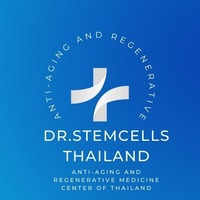Testicular Cancer


Testicular cancer is primarily treated through a combination of surgery, chemotherapy, radiation therapy, and surveillance, with the choice of treatment depending on the cancer type (seminoma or non-seminoma), stage, and individual patient factors.
Main Treatment Modalities
1. Surgery:
- The initial and most common treatment is radical inguinal orchiectomy, which involves removing the affected testicle.
- In cases where cancer has spread to lymph nodes, retroperitoneal lymph node dissection (RPLND) may be performed to remove affected lymph nodes.
- Surgery may also be done to remove metastases in organs such as the lungs or liver if necessary.
- Partial orchiectomy (removal of part of the testicle) is rare.
2. Chemotherapy:
- Chemotherapy is used after surgery to reduce the risk of recurrence or to treat metastatic disease.
- Common regimens include BEP (bleomycin, etoposide, cisplatin) or EP (etoposide, cisplatin).
- Carboplatin chemotherapy is an alternative, especially for stage I seminoma, often preferred due to better tolerability compared to radiation.
- High-dose chemotherapy with stem cell transplant may be used in poor prognosis or recurrent cases.
- Mainly used for seminomas, which are highly sensitive to radiation.
- Radiation is typically directed at the para-aortic lymph nodes in the abdomen.
- Usually given in 10–15 treatments over 2–3 weeks.
- Less commonly used in non-seminomas.
4. Surveillance:
- For patients with low-risk stage I disease, active surveillance with regular imaging and tumor marker tests may be recommended after surgery instead of immediate adjuvant therapy.
Treatment by Stage and Type
| Stage | Seminoma Treatment Options | Non-Seminoma Treatment Options |
|---|---|---|
| Stage I | Surgery alone with surveillance; or surgery + carboplatin; or surgery + radiotherapy (less common) | Surgery alone with surveillance; or surgery + chemotherapy (BEP or EP); or RPLND if chemotherapy not given |
| Stage II (A/B) | Surgery + chemotherapy (3 cycles BEP or 4 cycles EP) or radiotherapy | Surgery + chemotherapy; RPLND may be considered depending on response |
| Advanced/Stage III | Chemotherapy (BEP or EP), possibly followed by surgery for residual masses | Chemotherapy (BEP or EP), possibly followed by surgery for residual masses |
Fertility Considerations
- Treatments, especially chemotherapy and radiation, can affect fertility.
- Sperm banking is recommended before starting treatment.
- Removal of one testicle usually does not cause infertility.
Prognosis
- Testicular cancer is highly curable, especially when detected early.
- Seminomas tend to grow more slowly and respond well to radiation and chemotherapy.
- Non-seminomas may be more aggressive but also respond well to chemotherapy.
Follow-up
- Regular follow-up with physical exams, tumor markers, and imaging is essential to detect recurrence early.
Summary
- Surgery (orchiectomy) is the cornerstone of testicular cancer treatment.
- Chemotherapy and radiation are used based on tumor type and stage.
- Surveillance is an option for selected low-risk patients.
- Fertility preservation should be discussed before treatment.
- Overall prognosis is excellent with modern treatment protocols.
References:
- Title: Management of Stage I Testicular Cancer
DOI: 10.1016/j.eururo.2015.03.002
Summary: This article provides a comprehensive review of the management options for stage I testicular cancer, focusing on surveillance, chemotherapy, and retroperitoneal lymph node dissection. It discusses the risks and benefits of each approach, aiding clinicians in tailoring treatment strategies. - Title: Testicular Cancer: ESMO Clinical Practice Guidelines for diagnosis, treatment and follow-up
DOI: 10.1016/j.annonc.2021.07.017
Summary: These guidelines offer updated recommendations for the diagnosis, treatment, and follow-up of testicular cancer. They include strategies for managing different stages and types of testicular cancer, helping standardize and optimize patient care. - Title: Fertility considerations in the management of testicular cancer
DOI: 10.1007/s00345-021-03793-5
Summary: This review addresses the impact of testicular cancer and its treatments on fertility. It provides guidance on fertility preservation strategies, helping patients make informed decisions regarding their reproductive health during cancer management.















